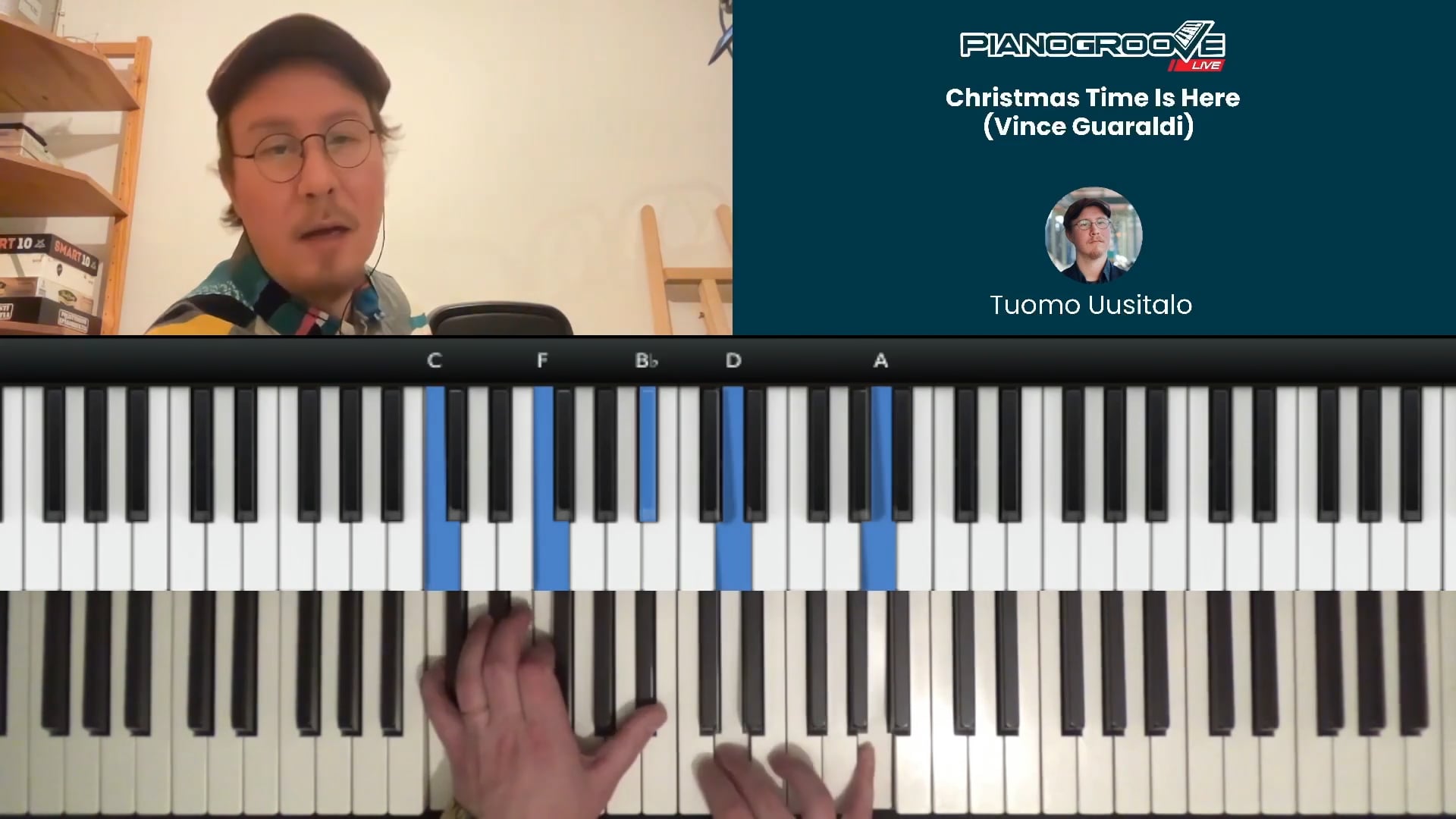
Tuomo Uusitalo
Tuomo is an award-winning pianist, composer, arranger and educator. Having released two albums as a leader, he has established himself in the New York jazz scene and continues touring internationally both as a leader as well as sideman.
Live Seminar Resources
Live Seminar Resources
PDF Downloads
- Transposition Handout
Join PianoGroove Pro to access all downloads and learning resources.
Download theory supplements, midi files, chord changes and full note-for-note transcriptions of every lesson.
- Days Of Wine & Roses
Join PianoGroove Pro to access all downloads and learning resources.
Download theory supplements, midi files, chord changes and full note-for-note transcriptions of every lesson.
- Prelude To A Kiss
Join PianoGroove Pro to access all downloads and learning resources.
Download theory supplements, midi files, chord changes and full note-for-note transcriptions of every lesson.
Seminar Description
Seminar Description
Mastering Transposition for Piano
Welcome to this workshop on transposing music, where we delve into the essential skill of transposing melodies and harmonies to different keys. Transposition is not only practical but also crucial for any pianist, especially when working with vocalists or other instrumentalists who may require a song in a key different from its original. In this lesson, we’ll break down the fundamental concepts, common modulations, and practical approaches to mastering transposition.
Understanding the Basics of Transposition
Transposition involves taking a piece of music from one key and playing it in another. The most common reason for transposition is to accommodate a vocalist or instrumentalist who is more comfortable in a different key. Beyond this, the ability to transpose effortlessly opens up a deeper understanding of harmony and aids in composition, performance, and improvisation.
Why Transposition Is Crucial
Adaptability in Performance: Whether accompanying a singer or a horn player, the ability to transpose ensures that you can play any tune in the most comfortable key for the soloist.
Harmonic Mastery: Transposing requires you to understand the underlying harmonic structure of a piece, not just the chords in isolation. This leads to a deeper grasp of how chords relate to one another within different keys.
Improved Composition Skills: If you write your own music, transposing allows you to experiment with different keys and modulations, adding depth and variety to your compositions.
Scale Degrees and 251 Progressions
At the heart of transposition is a solid understanding of scale degrees. Every major key has seven scale degrees, each corresponding to a specific chord type (major, minor, diminished, etc.). In jazz and many other genres, the 251 progression (minor 7th chord on the 2nd degree, dominant 7th chord on the 5th degree, and major 7th chord on the 1st degree) is a fundamental harmonic pattern that you’ll encounter frequently.
Master the 251 Progression
Identify Scale Degrees: Start by practicing the 251 progression in all 12 keys. This will reinforce your understanding of the relationship between chords and their positions within the scale.
Chord Voicings: Practice playing the 251 progression with different chord voicings. This will help you maintain a smooth, musical sound when transposing to new keys.
Visualize the Harmony: As you play through the 251 progression, visualize how the harmony moves and resolves. This mental mapping will make it easier to transpose on the fly.
Common Modulations in Jazz
In addition to transposing within a single key, many jazz standards modulate—or change key—within the piece. Understanding common modulation patterns can greatly simplify the process of transposing these sections.
Modulation to the 3rd (Major or Minor): A piece might shift from the tonic key (e.g., C Major) to the major 3rd (E Major) or minor 3rd (E Minor).
Modulation to the 4th or 5th: Moving to the 4th or 5th degree of the scale is a common way to create a sense of progression and movement in the music.
Modulation to the Relative Minor: Transitioning to the relative minor key (e.g., C Major to A Minor) adds a different emotional tone while staying closely related to the original key.
Work with Songs
Days of Wine and Roses: Start by analyzing the key of the song and identifying any 251 progressions or modulations. Practice transposing the song to different keys using the scale degree method.
Prelude to a Kiss: This piece contains more complex modulations. Begin by transposing the A section, focusing on understanding the harmonic movement before tackling the modulations in the B section.
Misty: This jazz standard is excellent for practicing transposition due to its clear harmonic structure and common modulations.
Practical Application: Transposing a Song
Let’s walk through a practical example of transposing “Days of Wine and Roses” from F Major to another key. Start by identifying the scale degrees of each chord in the original key. Then, use this framework to transpose the piece into a new key, ensuring you maintain the harmonic relationships.
Start with Small Steps
Choose Simple Tunes: Begin with simpler songs that have a clear, diatonic harmonic structure, such as “Misty” or “There Will Never Be Another You.”
Focus on Common Modulations: Practice transposing sections of songs that modulate to common keys like the 3rd or 4th degrees. This will build your confidence and understanding of how these modulations work.
Incremental Practice: Spend a few minutes each day transposing small sections of songs to different keys. Over time, this will significantly speed up your transposition process.
Conclusion: The Journey of Transposition
Mastering transposition is a journey that requires patience, practice, and a systematic approach. By focusing on understanding scale degrees, practicing common modulations, and working through real songs, you’ll develop the skills needed to transpose music fluently and confidently. Remember, the more you practice, the quicker and easier transposition will become.
Five Key Practice Tips:
Start with the Basics: Focus on mastering the 251 progression in all keys.
Practice Common Modulations: Work on modulating to the 3rd, 4th, and 6th degrees which are the most common modulation points.
Use Simple Songs: Begin with songs that have clear harmonic structures, such as “Misty.”
Be Patient: Transposing is challenging at first, but consistent practice will yield rapid improvement.







